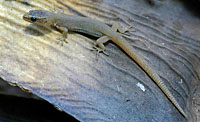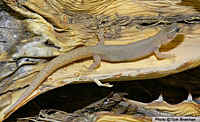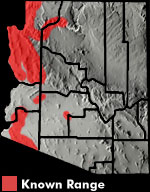Online Field Guide to The Reptiles and Amphibians of Arizona


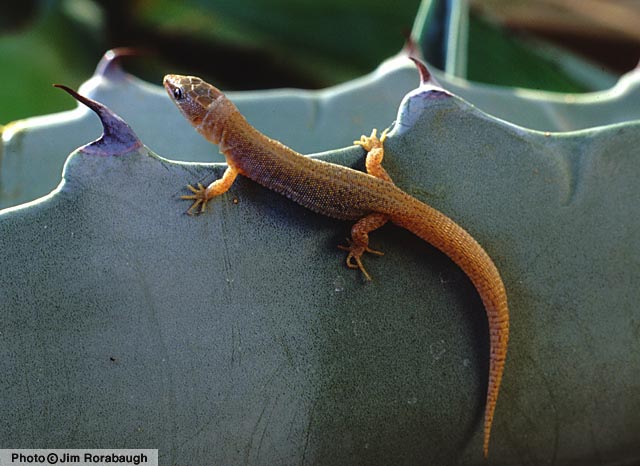
Yuma County, AZ
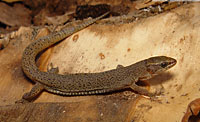 La Paz Co., AZ |
||
 La Paz Co., AZ |
| DESERT NIGHT LIZARD Xantusia vigilis | |
|
DESCRIPTION: A small (up to 57 mm or 2.25 ” from snout to vent), soft-skinned lizard with small, dark spots or flecks on a light tan, gray-brown, olive gray, or dark gray background. Some specimens lack spots or flecks. The scales on the upper surface of the body are small and granular and a fold of skin runs along each lower side. The scales of the belly and tail are larger and rectangular. The scales on top of the head are large, smooth, and plate-like. The eyes are lidless and the pupils are vertically elliptical. The northwestern part of the state individuals have apparently independently evolved adaptations to living in rock crevices. These ‘crevice dwellers’ are larger than lizards to the south, are dorsoventrally flattened, have larger dark blotches on the body and tail, and often superficially resemble the genetically distinct Arizona Night Lizard. HABITAT: The Desert Night Lizard’s range in northwestern Arizona closely follows the range of the Mohave Desertscrub and Interior Chaparral communities. In some areas it enters Great Basin Conifer Woodland and, in southwestern Arizona, it is found in several mountain ranges within Sonoran Desertscrub. It inhabits rugged slopes and boulder fields and shelters under dead plants such as agave, yucca, and prickly pear and, in northwestern Arizona, in rock crevices. DIET: The Desert Night Lizard feeds on ants, flies, beetles, a variety of other insects, and spiders. REPRODUCTION: Live bearing. Mating presumably takes place in spring and a brood of 1–3 young is born in summer. By Thomas C. Brennan Bezy, R.L., 2005. The Night Lizards (Xantusia) of Arizona. Sonoran Herpetologist. 18(2) 14-19. Brennan, T. C., & A. T. Holycross. 2006. A Field Guide to Amphibians and Reptiles in Arizona. Arizona Game and Fish Department. Phoenix, AZ Brennan, T. C., & A. T. Holycross. 2005. A Field Guide to Amphibians and Reptiles of Maricopa County. Arizona Game and Fish Department. Phoenix, AZ |
|
Visit Partners in Amphibian and Reptile Conservation:


HOME
Copyright © 2023, Arizona Game and Fish Department. All rights reserved.
If you make use of the textual contents of this site in reports, publications, etc. please cite and credit the author(s) and photographer(s). All photos on this website are copyrighted. However, those found in the species account section may be used for any noncommercial scientific, educational, or conservation purposes provided that photographs are not altered and continue to bear the copyright symbol and name of the photographer. Please contact the photographer regarding commercial use of copyrighted photographs.










